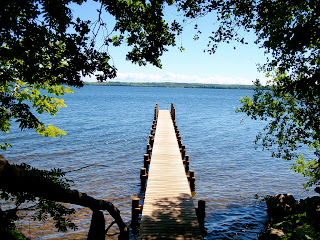For today's class, we had the chance to visit Gribscov, the second largest forest in Denmark. Arriving at the Nature Agency office, we were introduced to the agency and learned about their goals of protecting and maintaining Danish greenspaces. As a class, we were made aware of the Nature Agency's on going struggle to establish Gribscov as a national park, against contested legislature and land disputes. After learning about these issues and experiencing Gribscov first hand, I can say that there are distinct differences between Danish National Parks, and National Parks back home in Canada.
Although both Danish and Canadian National Parks share similarities in terms of their functions, such as being tourist destinations and recreational sites, both remain distinctly different. As a country, Canada is known for its natural landscapes and expansive wilderness. Currently there are 36 National Parks and 8 National Park Reserves spread throughout the country's provinces and territories. Compared to Denmark's 6 National Parks, Canada greatly outnumbers Denmark through its vast and diverse geography. In Canada, National Parks are owned and regulated by the federal government, in an attempt to preserve our natural landscapes and protect them from harm. This means that there is a zero tolerance for logging and harvesting timber, unlike Denamrk. In doing so, these National Parks will continue to exist, acting as a resource to both people and animals.
When looking at Denamrk, their regulation and management of National Parks greatly differs. As discussed earlier, the Nature Agency has had to deal with on going struggles to establish national parks within the country. The reason behind this, is the ownership of private and state owned land. As a result, many greenspaces such as Gribscov remain contested land, and are subject to stringent negotiation and planning by multiple parties, such as the Nature Agency.




No comments:
Post a Comment